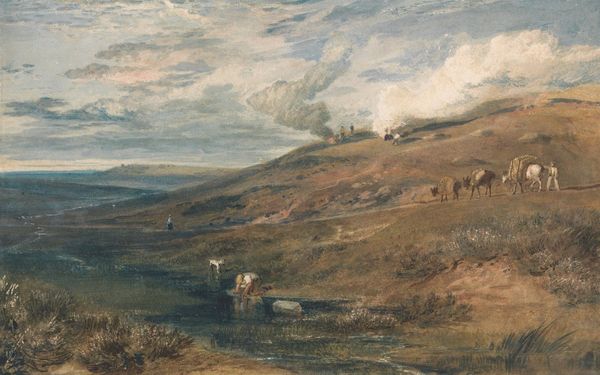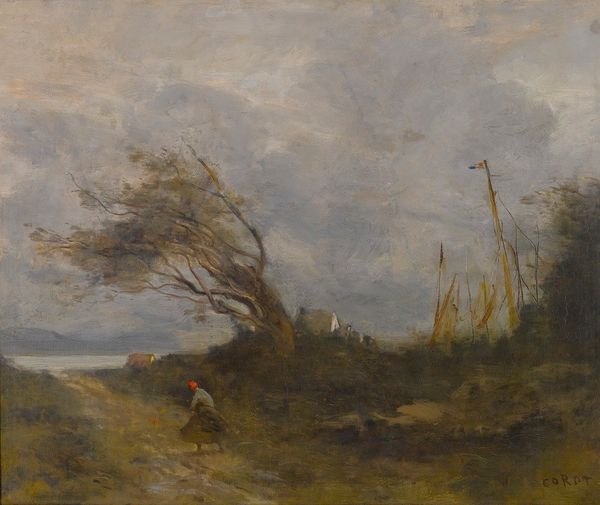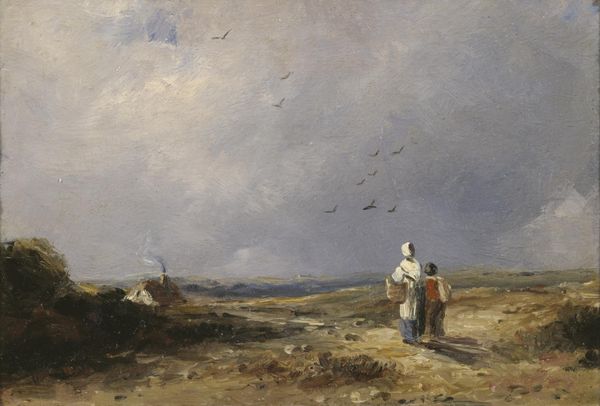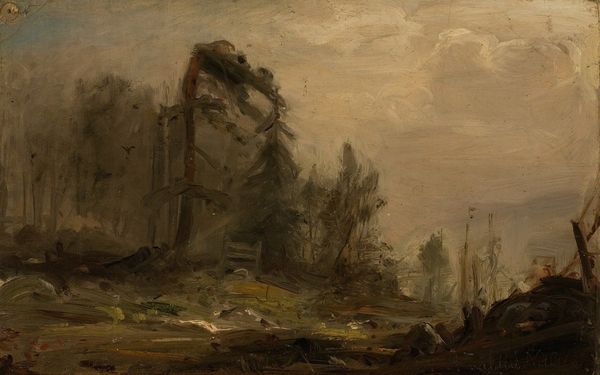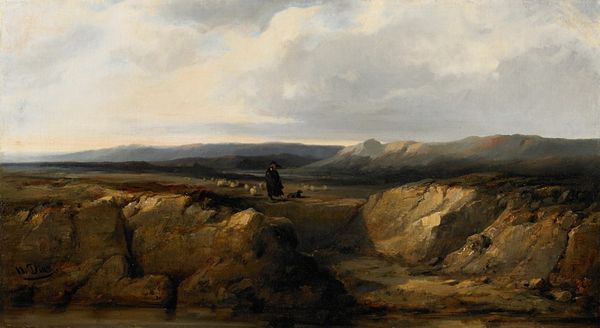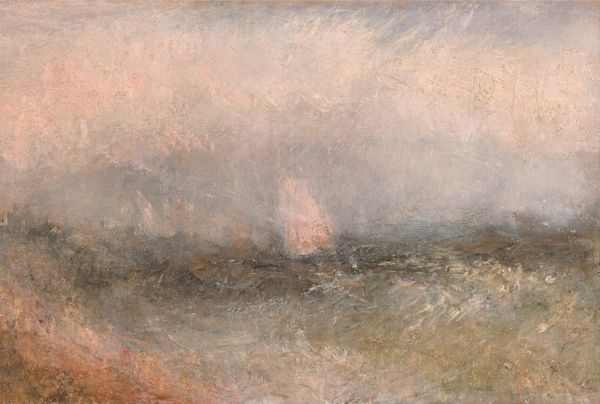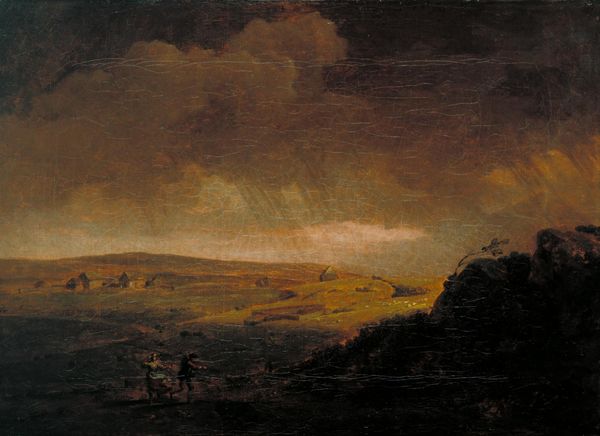
painting, plein-air, oil-paint
#
painting
#
impressionism
#
plein-air
#
oil-paint
#
landscape
#
oil painting
Copyright: Public Domain: Artvee
Editor: So, this is "Le Matin Au Bord De L’eau" by Camille Corot, painted between 1870 and 1873. It’s an oil painting, and there’s this gentle, hazy quality that makes it feel very dreamlike. What do you see in this piece? Curator: It strikes me as a commentary on labor and landscape within a patriarchal structure. Consider the two figures – presumably women – rendered almost indistinct within the landscape. Corot, whether consciously or not, situates them as part of the scenery. What is their relationship to this land? Are they workers, or merely placed there to fulfill an expectation of the female form being associated with the "natural?" Editor: I hadn’t thought about that at all. I was just caught up in the light! Curator: Exactly. The impressionistic style invites that immediate aesthetic reaction. But think about it in terms of its time. These paintings weren't created in a vacuum. The rise of industrialization was reshaping French society. How does this seemingly pastoral scene engage—or perhaps disengage—with the realities of women’s roles during that period? Do you think it celebrates or perhaps idealizes rural life? Editor: I guess I always took it at face value. Maybe that soft, hazy light obscures a more complex reality? Are those figures in the mid-ground meant to be understood critically? Curator: Precisely! We must ask: whose vision are we seeing? And what societal norms is that vision upholding or challenging? Editor: Wow, it definitely makes me think about Impressionism in a completely new light. Thanks! Curator: The pleasure is mine. Always remember to interrogate the supposed neutrality of beauty; art often serves power, whether intentionally or not.
Comments
No comments
Be the first to comment and join the conversation on the ultimate creative platform.
